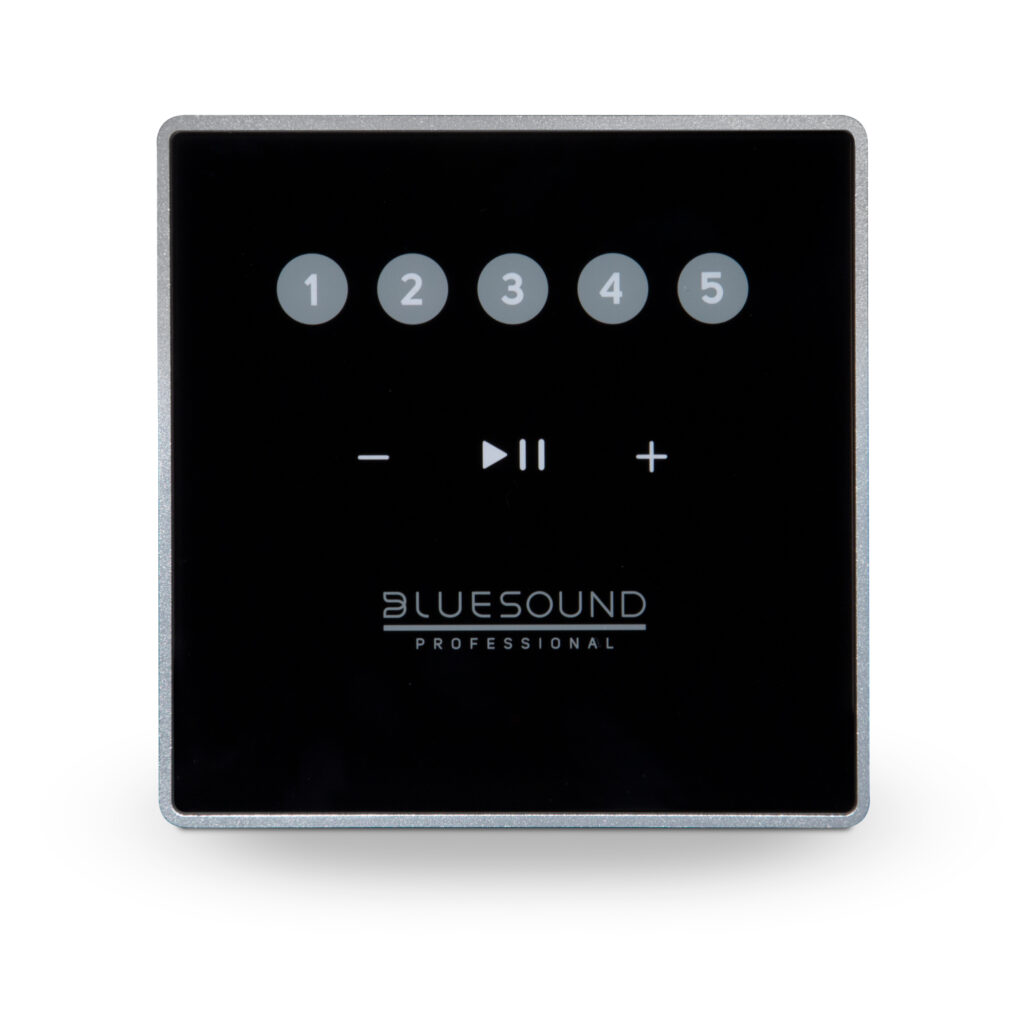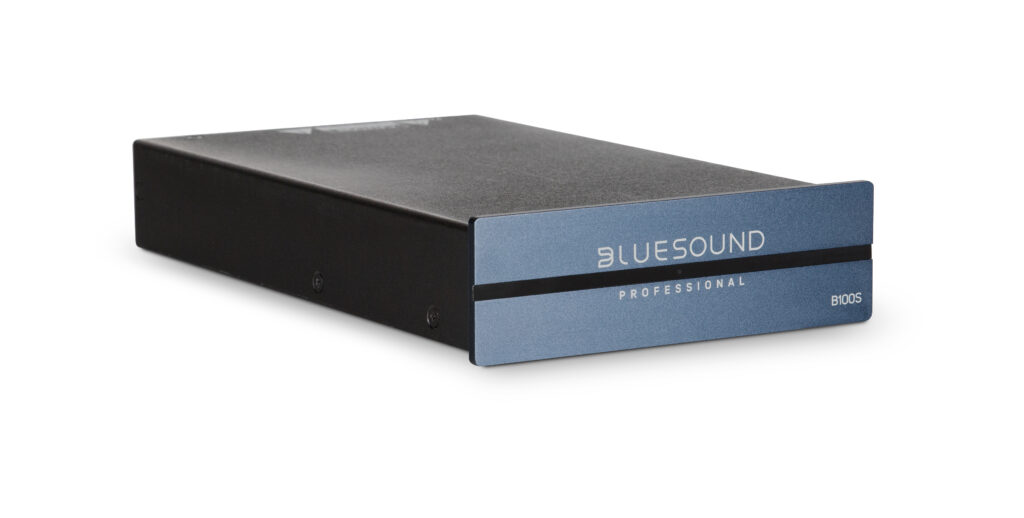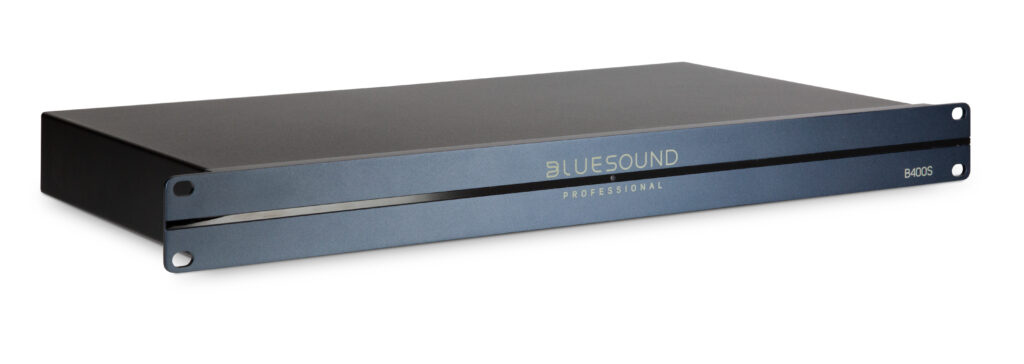Bluesound Professional

Using Soundscapes in the Office to Improve Productivity
How Soundscapes Can Improve Productivity
Listening to music has been proven in research to be beneficial for improving productivity when working. In the human body, studies show that the therapeutic elements of music can improve psychological, neurological functions as well as health cases like dementia and speech loss. In a workplace environment, music can significantly boost employees’ productivity and performance levels. Correlations have been found between employees that listen to music and their productivity levels, quality of work and ability to focus. In a time where people have become accustomed to working remotely, the transition to going back to the office may be appealing to some more than others. Here is why the use of streaming background soundscapes in the office could benefit employees as they adjust back to an in-person office environment.

The Effect of Music on Productivity
Research shows that strategically implementing music in a work routine can significantly improve various elements of productivity including time-on-task, quality of work, focus and creativity. A study by Teresa Lesiuk at the University of Windsor on the productivity of software developers from various Canadian software companies indicated that state positive affect and quality-of-work were lowest with no music, while time-on-task was longest when music was removed (Lesiuk, 2005). Another landmark study conducted by Greg R. Oldham in 1995 shows the correlation between improved performance and satisfaction of employees who were given personal stereo headsets to listen to music at work compared to those who were not given access to the headsets (Oldham, Cummings, Mischel, Schmidtke, & et al, 1995).
While playing something like upbeat rock in an office environment would certainly be distracting, opting for calmer, slow-tempo soundscapes like calm classical, instrumental background jazz or ambient electronica could be a good start.
Tackling Creative Tasks
Listening to music while working can also help stimulate creativity. Further in her study, Lesiuk concluded that software developers who were faced with the task of solving complex creative coding problems were positively impacted by the effect of music listening. Mild positive feelings have been found to influence positively the way cognitive material is organized, influencing the brains way of digesting complex problems. A beneficial effect of music on task performance may be explained by increases in state positive affect (Husain, Thompson, & Schellenberg, 2002). When music evokes a pleasant mood and an increased arousal state, people tend to perform better on non-musical tasks. Evidently, music not only can improve the quality and speed of work, but also help employees who are tasked with creative problem solving.


Reducing Stress
Music plays an essential role for our senses and nervous system. As we listen to music, multiple areas of our brains are stimulated, and the commonly known ‘happy’ brain chemical called dopamine is released in the reward center. In a 2001 study, researchers at Monash University explored the effect of sedative music on participants’ subjective and physiological stress levels following a cognitive stressor involving the preparation of an oral presentation.
Significant increases in physiological stress were reported for those who prepared the task without music, while the presence of music suppressed significant increases in subjective anxiety, systolic blood pressure, and heart rate (Knight & Rickard, 2001). Playing music can be a way to keep employees relaxed and suppress feelings of anxiety especially in workplaces with high-stress measures.
Using Soundscapes in the Workplace
In post-pandemic world where everyone is back to work at the office, playing background music can help people to stay relaxed and focused as they re-adjust their routines after being away for a prolonged period. In our Surroundscapes Podcast, Julian Treasure, Founder of the Sound Agency and Moodsonic, discusses with Graeme Harrison, VP and GM of Bluesound Professional, the importance of sound in the office and how MoodSonic works with clients to improve office privacy with the rise of teleconference calls, as well as create office soundscapes to invoke feelings of safety, cleanliness and even a sense of home for workers especially in the post-pandemic environment.
“Going back to the office, I think is something that a lot of people do feel uneasy about – getting back into close proximity with other human beings. Offices can be cleaned regularly, but unfortunately you can’t see that, can you? The idea is that the soundscape communicates cleanliness, which of course we can do with sounds like running water, which is symbolically associated with purity washing. Then we’ve got sounds like birdsong in there, which tend to make people feel reassured. You know, we’ve been waking up to the birds for hundreds of thousands of years. Most of us feel that when the bird happily singing, we are secure and safe, so it’s that kind of association, some gentle musical elements, kinds of music that are associated with kindness or compassion and so forth. These kinds of things mixed in with various other things create a soundscape which is designed to give a feeling of security, or just to reduce stress a little bit.” – Julian Treasure, Founder of the Sound Agency and Moodsonic (Bluesound Professional, 2020).
Sanitary Solutions for Music Control
In a post-pandemic world where companies move back to in-office work routines, sanitary conditions will be vital in ensuring safe and clean environments for employees to feel at ease. As such, sharing hardware technology between employees should be kept to a minimum. Our commercial music streamers and CP100 Wall Mounted Controller run on a centralized BluOS system that is remotely accessible and voice command enabled. Music selection can be handled using the BluOS app on a tablet that can be frequently cleaned, or alternatively, employees can access the app from their own phone to limit contact.
The CP100 is a wall mounted, touchscreen controller that can be accessed to control music without needing a smartphone or external interface. In controlled working environments like office spaces, the CP100 is a great, sanitary option for employers looking to implement a way for employees to control and monitor background music through a centralized system. The touchscreen can be easily wiped, and the music can be curated with Bluesound Professional’s business music partners which provide access to millions of songs and hundreds of content libraries.

Discover our BluOS Network Music Players – B100S & B400S
Our network music players can be easily configured and mounted in an office control room rack. BluOS, a multi-room audio technology that allows you to manage a virtually unlimited number of zones of music, is native in the music players and controlled through the BluOS controller app on a phone, tablet or computer. Our players are capable of playing and distributing content from local storage or from a variety of business music streaming services. Bluesound Professional works with countless business music services like SoundMachine, QSIC, Tunify, CustomChannels and SiriusXM to help commercial spaces like offices create the most fitting soundscapes for their environment.
Works Cited:
Husain, G., Thompson, W. F., & Schellenberg, E. G. (2002). Effects of musical tempo and mode on arousal, mood,
and spatial abilities. Music Perception, 20(2), 151-171. doi:10.1525/mp.2002.20.2.151
Knight, W. E., & Rickard, N. S. (2001). Relaxing music prevents stress-induced increases in subjective anxiety, systolic blood pressure, and heart rate in healthy males and females. Journal of Music Therapy, 38(4), 254-272. doi:10.1093/jmt/38.4.254
Lesiuk, T. (2005). The effect of music listening on work performance. Psychology of Music, 33(2), 173-191. doi:10.1177/0305735605050650
Oldham, G. R., Cummings, A., Mischel, L. J., Schmidtke, J. M., & Et al. (1995). Listen while you work? quasi-experimental relations between personal-stereo headset use and employee work responses. Journal of Applied Psychology, 80(5), 547-564. doi:10.1037/0021-9010.80.5.547
Bluesound Professional. (2020). Julian Treasure, Founder of the Sound Agency and Moodsonic [Podcast].
Retrieved 24 February 2022, from
https://open.spotify.com/episode/2h7ONl8kV2Nv2gBcx0dCGS?si=u-e-v5tuSoS5kqdwS2NxNQ
Bluesound Professional is proudly powered by WordPress
Join us at InfoComm 2023

Almost there! Please check your email to confirm your subscription.


